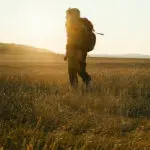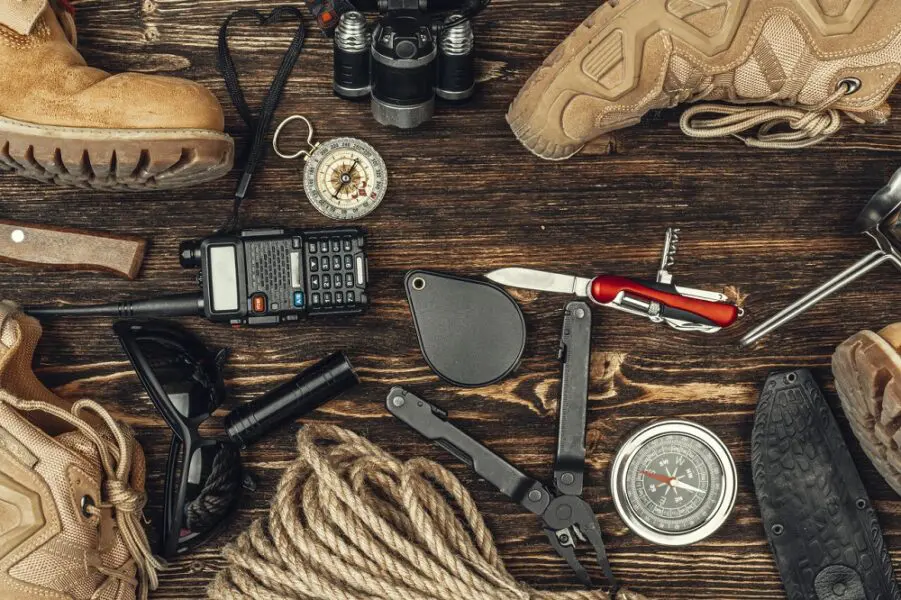Having the best survival gear, with the best survival tools, which are also compact and lightweight, is an essential thing to be prepared for any disaster and survive until someone comes to rescue you.
But buying ready-to-use survival kits with already chosen survival gear isn’t always the best choice, though. On the one hand, if you want a cheap way to pack all the essential food and supplies, a bug out bag from Amazon filled with a first aid kit and a sleeping bag with a wilderness survival guide will get you through a couple of nights good enough to survive.
But on the other hand, if you select your survival gear, food rations, personal belongings, and all other necessary survival tools in a lightweight pack that is weatherproof, you will be feeling a lot more comfortable knowing what exactly you have and how to use it.
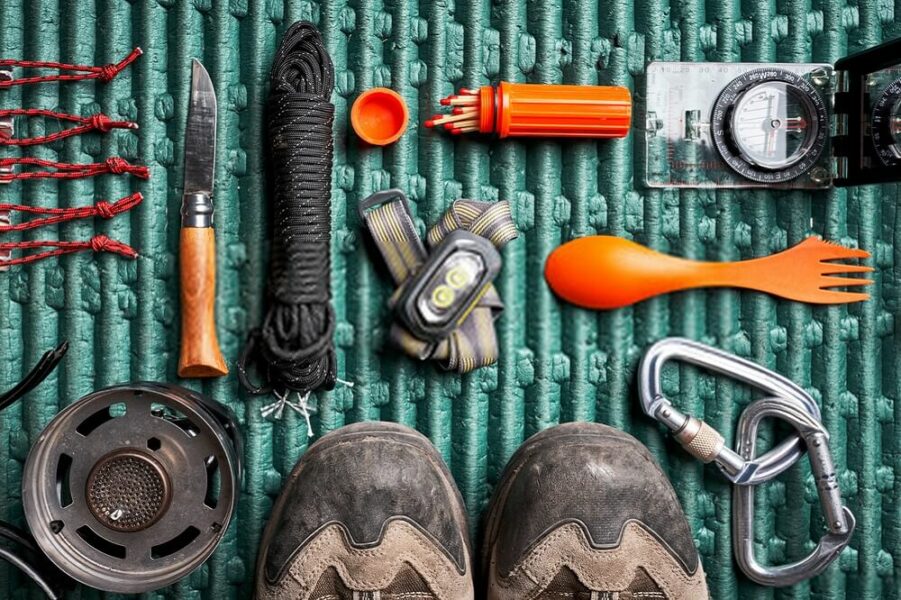
So in this article, we will look at some of the wilderness survival’s most crucial survival gear that will carry you through the harsh world of mother nature. I’ve put all the items in specific categories to make it easier to transform the article in a makeshift checklist for equipment, thus allowing you to sleep calmly at night knowing you are prepared for any disaster, and you have all the essential survival gear to tackle it easily.
What Is The Most Important Survival Gear That You Will Need?
Water and Hydration
As continuously, we begin with water since it’s a player in about all major crises. So, you would like the proper survival to equip to turn flawed water into drinkable thirst-quenching H2O. The great news is this one is clear, you’ll fair require a water channel, and to be straight to the point, the leading one on the advertisement is the little, lightweight, and effortlessly utilized Sawyer Scaled-down Water Channel, at which we’ll be looking at.
1. Sawyer Mini Water Filter
Sawyer Scaled-down Water Filter I’ll make this one as bored as conceivable. You never want to be constrained to drink terrible water. We’re talking sewage-filled, bacterial loaded water that can make you wiped out. Rather than talking approximately a terrible circumstance, snatch a handful of Sawyer Smaller than expected convenient water filters. They’re designed to evacuate infinitesimal particulates and perilous microbes from suspect water. Couple one with a few water decontamination tablets and you’re prepared for most water-related crises. And you’ll effortlessly drink any water with confidence.

2. Water Bottle
If you ever got to make it within the wild or on the move, you’ll have to carry water in order to survive. And after you have as of now sifted your water, then another step, and hence, the following piece of your survival adapt could be a water botter. Since you seldom know how distant the following water source is, and a water bottle keeps you hydrated between sources. Get a metal one with a single divider as it were (no double-wall protects ones). Metal permits you to bubble water over a fire in a squeeze, but warming up a double-walled bottle can cause a blast!
3. Hydration Pack
A hydration pack, in a sense very similar to a water bottle, but it is still something that you should definitely include in your survivalist gear. It weighs only a couple of ounces, and most survival gear backpacks that are made for a survival kit have a dedicated MOLLE system pocket to accommodate for a hydration pack, plus a straw so you can drink at any time you want.
While in the way the bottle and the pack make themselves obsolete, a second way to store extra water in your backpack is definitely something that can save your life in the wilderness.
Shelter
While the most common misconception is that after water comes food, the food isn’t as important as your temporary living space until the search and rescue found you, this being your emergency shelter. Extreme temperatures and weather make finding shelter and keeping your body heat into your number one survival need. So you’ll either supplicate you’ll lurch over a characteristic survival shelter (or an abandoned cabin within the woods).
Otherwise, you can get contribute in a few lifesaving emergency shelter gear. In my opinion, the latter option is much better, because no natural shelter can beat an isolated tent with a sleeping bag in it.
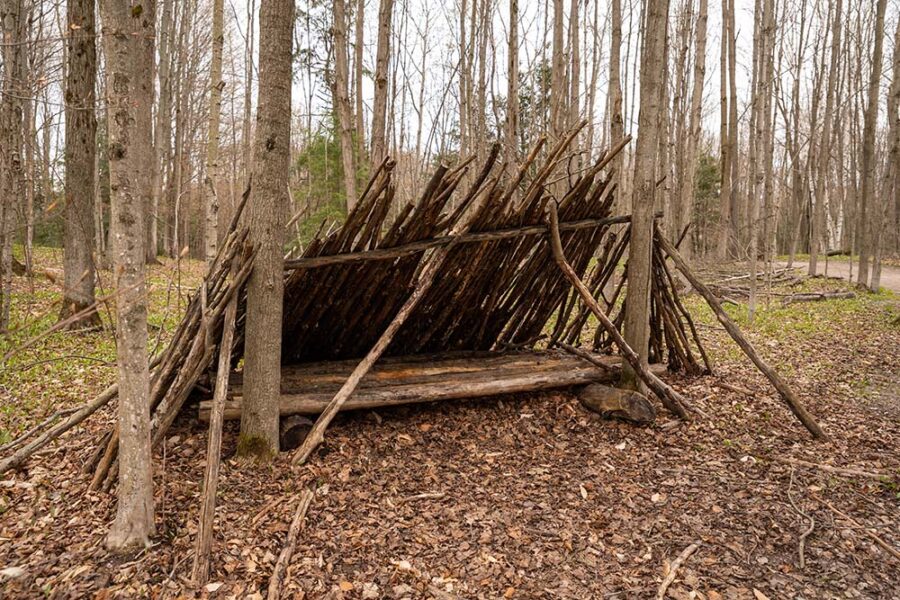
1. Survival Tarp
Tarps are an amazing crisis protect choice, but a cheap tarp will not do. You ought to contribute in a high-quality, waterproof, rough, ripstop survival tarp with plentiful stay points. A great survival tarp permits you to structure diverse shield setups to keep wind, rain, hail, and snow off of you.
There are endless guides out there on the ways you’ll set up a crisis shield with only a tarp. In conclusion, within the case of a crisis, the tarp isn’t a perfect way. The perfect way to form protect per se, but it is definitely the foremost flexible one. Additionally, it as it were weighs as it were a few ounces at most, so it’ll spare you on numerous of your not-so-effective climb adventure.
2. Cold Climate Tent
OK, on the off chance that you live in cold districts, a tarp might not work well in the dead of the winter wilderness. Instep, you might need to update to a cold-climate tent or a canvas tent. These tents aren’t the lightest; hell, most will be over 10 lbs with all the stell parts with them, but they won’t struggle in keeping you warm.
These are the tents that professionals use to keep safe at high altitudes on their hike adventure trips. So this way to make an emergency shelter is truly essential in the coldest weather the wilderness can offer.
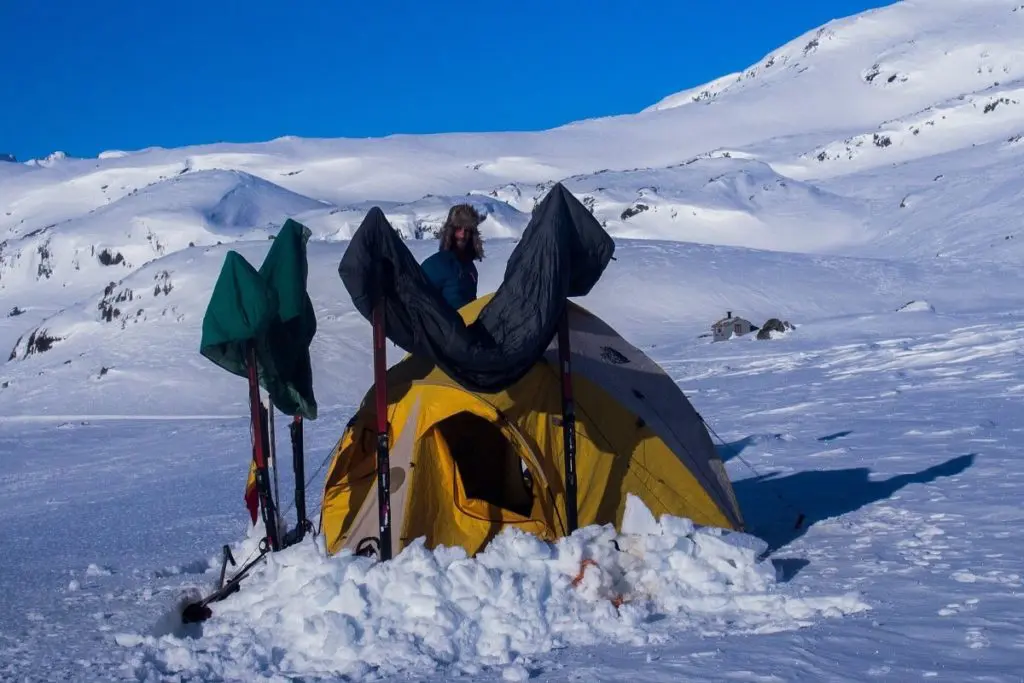
3. Survival Blanket
Finally, there’s the Propriety Bivvy. It’s a crisis cover (or bivy pillage) that can be included in any of the overprotect alternatives. This piece of lifesaving adapt weighs beneath 5 ounces. “Lifesaving,” you ask…absolutely. After you jump in this Thoughtfulness bivvy, it traps your body warm to keep you warm indeed in cold temperatures. I tried one amid solidifying temperatures exterior and was sweating after fair a number of minutes. The inside temperature within the Bivvy comes to the mid-70’s!
Fire Starter Survival Gear
Firestarter and survival are essentially one and the same. Beginning a fire in calm dry conditions is one thing. Starting a fire in a blizzard or heavy deluge could be an entirely different ballgame. You wish the proper survival equip to assist you to get a fire begun, no matter the conditions.
1. Fire Starter
A fire starter maybe a gadget for beginning fires. Mountain climbers and the individuals who climb, ordinarily utilize a magnesium amalgam fire starter and striker that’s planned to make a fire in all weathers, climates, and altitudes. How adventure stores sell both magnesium starters, firelighter blocks, and other specialist tinder survival kit gear.
2. Lighter
You have a lot of choices that you can put into your emergency survival kit when it comes to lighters. You can choose something more on the budget side, like a standard BIC lighter from your local convenience store, or you can go high-tech with a Tesla lighter. And still, you can choose some more traditional gear like a Zippo lighter.
At the end of the day, the choice is yours. I like the Tesla lighters for my survival kit gear since they work in wet and high wind conditions. But you should always have three ways to start a fire.
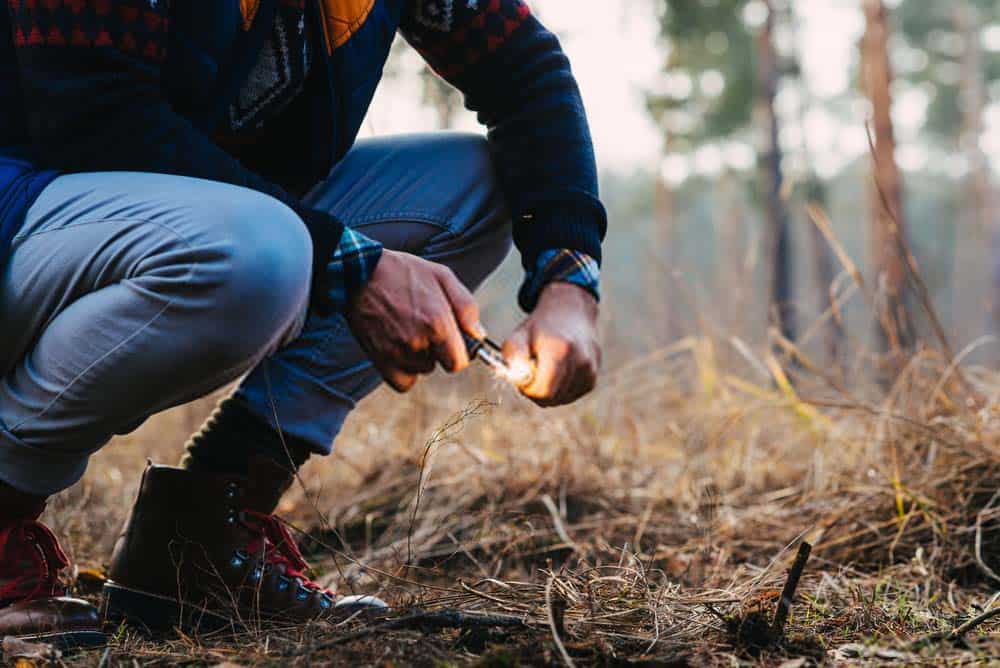
2. Fire Striker
Do you know what the greatest drawback is of any of the fire starter strategies said over? They all require some kind of power source. These can run out or go dead fairly when you require them most. Instead, why not also have a pice survival equipment that will nearly never run out. Get a quality Ferro pole. The Ferro Fire Starter pole has 12,000 strikes, and that’s a lot of fires. Utilizing one takes a lot of practice, but they are commendable of a spot on your survival unit equipment list.
3. Permanent Matches
Permanent matches are another type of fire starter gear because you can never really get too many ways to start the fire.
When you just have daily matches for your survival equipment, you make a mistake because you can’t use them much if they get muddy. Then you can’t use them at all. They are only a few ounces, so carrying a pack won’t do any harm.
A permanent match can get wet, and even then, it will light up without any problem. If you’re going to have any (and need to) survival matches, then you need permanent matches. Many places also sell some permanent matches free of charge, so they are the ideal cheap and lightweight fire starter on the market.
4. FireLaces
Firelaces are one of those pieces of emergency gear you can wear every day. These are an ingenious piece of gear, shoelaces with mini Ferro rods at the ends. By looping the striker into the laces, and you’re shoes become a very important piece of survival gear in their own right. Your shoelaces are now a fire starter.
Survival Weapons
Next up is emergency survival weapons. Wait! Are weapons considered gear? In my opinion, YES. Self-defense IS survival. Ammo counts as a survival supply. So let’s cover some common and some lesser-known equipment that can go in your survival kit gear you can use to defend yourself.

1. Survival Knife
Without a doubt, a fixed-blade survival knife is one of the most common and inarguably best survival tool. It is so versatile and can accomplish so many survival tasks, but for a more multifunctional piece of gear for your survival kit, we will look at a bushcraft knife, which is more versatile than a Survival knife.
But what this knife lacks in versatility, it makes up with its stainless steel powerful blade. It’s usually the first pieces of survival gear most people get, with more serious survivalists owning a couple. Another type of bladed gear you might want to add to your survival kit is a survival machete. It’s a super versatile tool/weapon, but more on that down below.
2. Survival Axe
Survival hatchets and bushcraft axes are similar in almost anything except size. The hatchet is shorter and much more lightweight, while an ax is longer and heavier. Both of these perform critical survival tasks, and they like felling trees and splitting wood
And while you can do these with a good survival knife by batoning, it better not be in large quantities. I recommend getting a hatchet with a built-in pickaxe for even more versatility, but try to look at the best one, that is focused on only a small amount of tasks because you want a well trained one truck pony rather than a useless jack of all trades.
3. Survival Machete
A survival machete falls somewhere in the middle of a survival hatchet and a survival knife. It has the power and size of the knife with the versatility of an ax. While it is a little bit more sizeable, it can help you chop your way through the Flora of any place on earth in no time. While I think that having all of the three survival weapons isn’t necessary per se if you can carry them all at once, you will definitely find cases where you need exactly one of them, even if they overlap themselves sometimes.
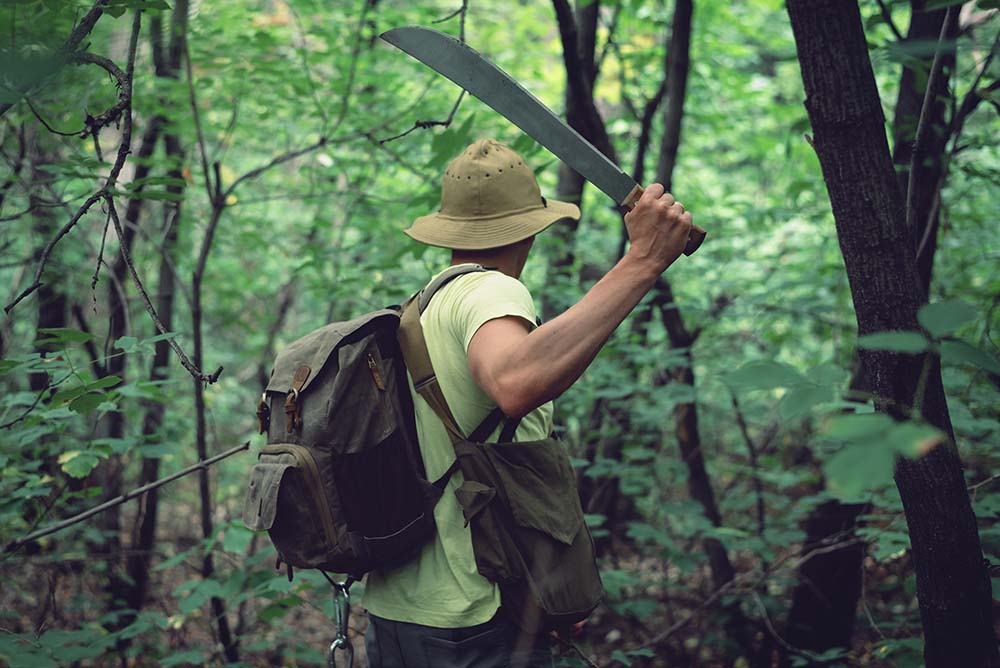
4. Survival Firearm
Survival firearms are a definite piece of gear that you should put in your emergency survival kit because it can help you in all sorts of different ways. There are many things you should consider. Weight, accuracy, ammo availability, ruggedness are variables you must take into account. Just make sure the firepower is enough for the whole family in any kind of emergency.
5. Bore Snake
While a bore snake isn’t a weapon, it belongs to this group.
For someone who owns a weapon, it is a must-have. If you want your gun to shoot when you pull the trigger and keep it accurate, you have to take the time to keep the bore clean because, in the case of an emergency, you need the most response possible.
6. Survival Bow and Arrows
When hunting or defending during an emergency, silent and deadly are the things that you want the most from a weapon. Do not get me wrong, you gotta have firearms, but if you’re in a survival situation where stealth is crucial, then no silencer can replace the stealth that the bow and arrow give you.
I like having the option of hunting wild game or dangerous threats silently if need be. You should be looking at something more portable like a takedown recurve bow with stainless steel or an aluminum riser and magnesium or carbon fiber arrows, and steel ones are too heavy.

7. Survival Crossbow
If you want something more akin to hybrid gear to add to your emergency survival kit, then the crossbow is what you are looking for. It’s I combination of the trigger shooting of a gun with the silence and accuracy of a bow, so in a sense, you can go hunting and easily defend yourself silently, but I think it is best to have both a firearm and a bow and arrow.
8. Tactical Pen
This isn’t exactly “go-to” weapon, but I’m also not very good at it. I’ve seen videos on tactical pens used to protect oneself, and they’re lethal in the right pair of hands, but not in the John Wick type. I do have one as a backup, but I hope I never need to use it.
9. Stun Gun
Stun Guns are common non-lethal self-defense equipment. When someone is hit with a high voltage stun gun, they will go down fast and hard. They won’t know what hit them, so you’ll be able to neutralize the threat, or escape. A worthy piece of survival equipment for the list.
10. Pepper Spray / Mace
Everyone should have a can of Devil Juice Pepper Spray. It is a powerful spray that can drop an attacker in an emergency from as far as 6 feet away. This is important because it is best to neutralize threats before they escalate.
Devil Juice has a SHU rating of 3 million, which will is enough to neutralize any person. Normally hot pepper is about a hundred units, so you can imagine how much damage this can do if you spray it for more than a couple of seconds.
Food and Preparedness
When it comes to food during an emergency, you can never have enough, just like water, but you shouldn’t go overboard with it. The most important thing is to try to get only the type of food you can carry with you for weeks on and without any worrying it will go bad, like emergency food rations and emergency food provisions that only weigh a couple of ounces but will have as many calories as a full-sized meal, plus, they will save you some time until you need to start hunting.
1. Survival Shovel
Some people swear by having and using a shovel for protection, while others find it unnecessary. But a shovel can do one thing that no other bladed tool can do at least not nearly as well), dig large holes and push tons of dirt around.
A knife can’t do that; a tarp can’t, a stick can’t do that. Only a shovel will do when you need to dig a trench or a foxhole, so if you are building a shelter, this is an invaluable piece of starter gear.
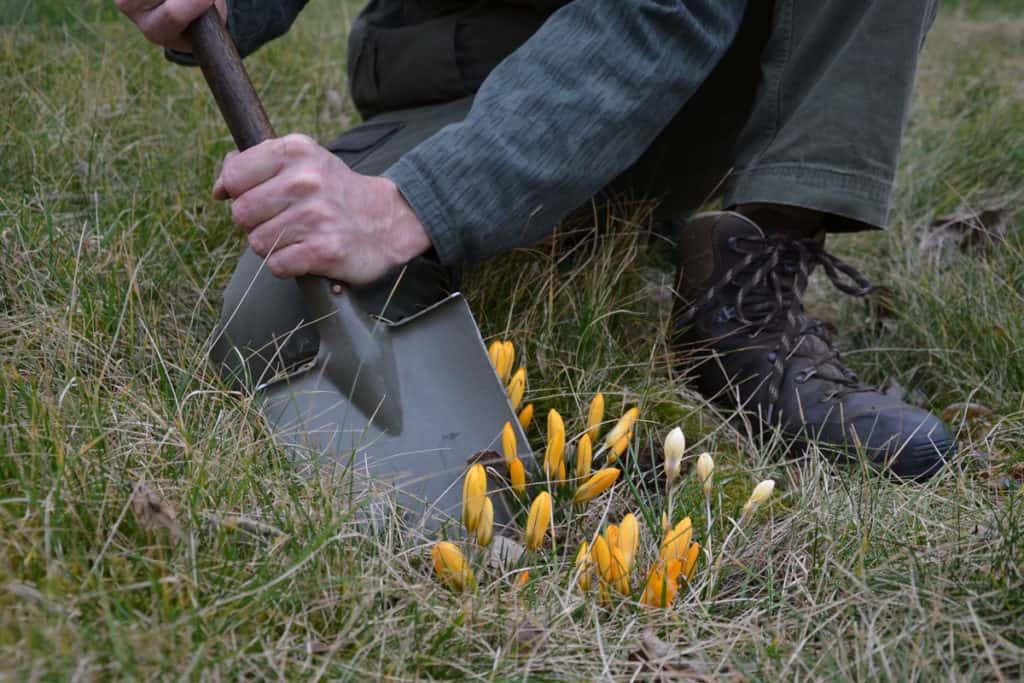
2. Snares & Traps
You can make your own traps and snares, but it’s easier to snag a meal if you’re using gear specifically designed for the task. So picking up a few wire snares and animal traps and learning how to use them is a must, to make hunting a lot more painless and easy.
3. Fishing Pole
Standard fishing poles are excellent, but for survival, I always try to find survival gear that’s lighter and more portable. So you should check out these – Pocket Fishing Pole, Short Rod, Telescoping Rod. All three of them will do a good enough job like a normal one.
4. Fishing Tackle
Get a fishing tackle box with a few essentials to catch some tasty fish. A few crankbaits, some plastic worm a little bit of catfish stink bait, some lead, some hooks, a bobber or 2 for starter, and you are good to go.
If you don’t, you’ll have to make a hook out of a pop-top or whittle one out of wood. And while both sound fun, in a critical situation, you aren’t looking for something fun
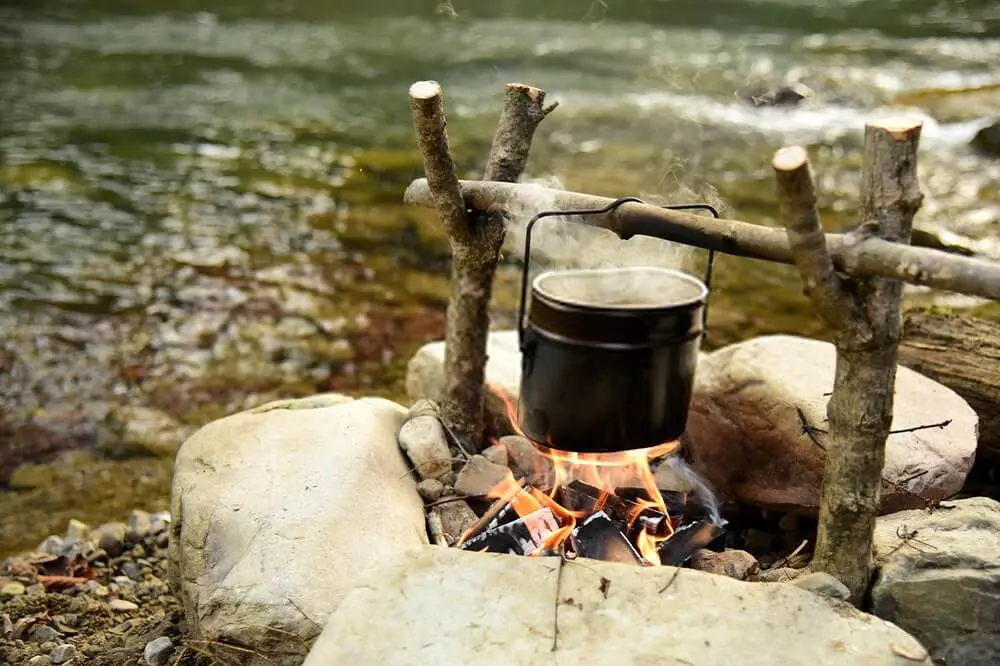
5. Spork
You likely have a knife but probably not eating utensils. So with a lightweight and portable spork so you can eat a meal with a bit of decency in a survival situation. A stainless steel or carbon steel spork is an irreplaceable food companion on your adventure
6. Survival Food Kit
A survival food kit, as the name implies, is a starter for all the calories you will need for at least three to five days. It will include expandable water rations at power bars containing a huge amount of carbs fibers to help you last even in a situation where you can’t go out hunting for more food. But if the emergency continues for over a week, you need to remember that this pack serves only as a starter course, so you will need to find a way to get more calories.
Camping and Bushcraft
If you end up stranded in the middle of nowhere, someplace deep in the woods where your phone’s GPS signal won’t work, and you can’t call for help, you will need to channel your inner Bear Grylls and use whatever skills you have in the art of bushcraft.
Bushcraft is not only a way of survival, but it’s also a way to tap into our predecessor’s deep connection with mother nature and use her recourses to their fullest to survive even the toughest conditions. When you know how to bushcraft, camping, and keeping your life together in the wild won’t be so bad, trust me.
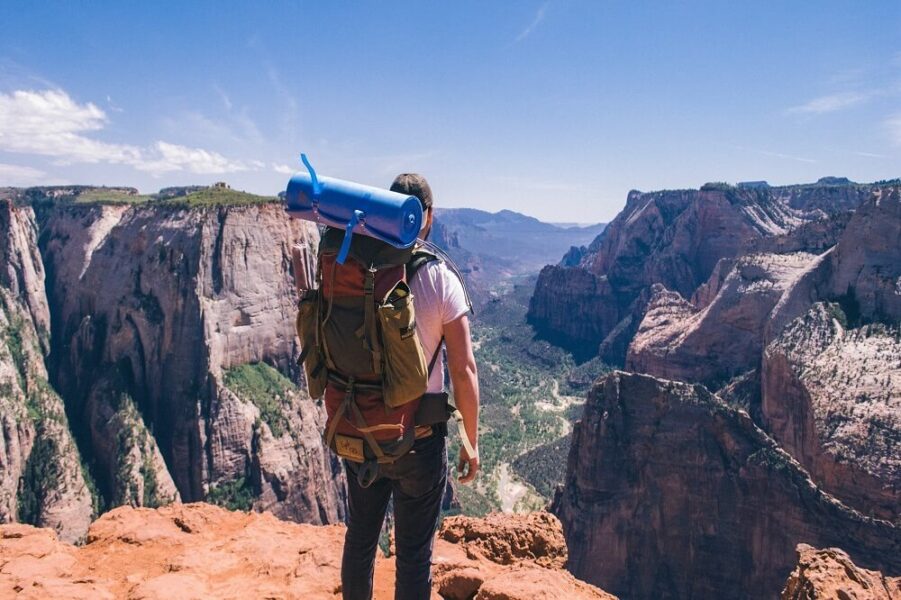
1. Bushcraft Knife
The art of bushcraft is something very special that is learned through many weeks of experience trying to survive in the wild, and the most important Bushcraft tool is the knife. It is usually made out of carbon steel or stainless steel and is pretty much somewhere between a home knife and a survival knife in size.
2. Shelter
As we’ve touched on above, after water, shelter is the second most important thing, no matter what adventure you may fall into. But we have also already discussed all of the ways that you can build a shelter successfully.
You just need to select a good place, somewhere near water, but not too close to it because other people or animals may be interested in a water source too, and somewhere you can take advantage of nature’s natural formations.
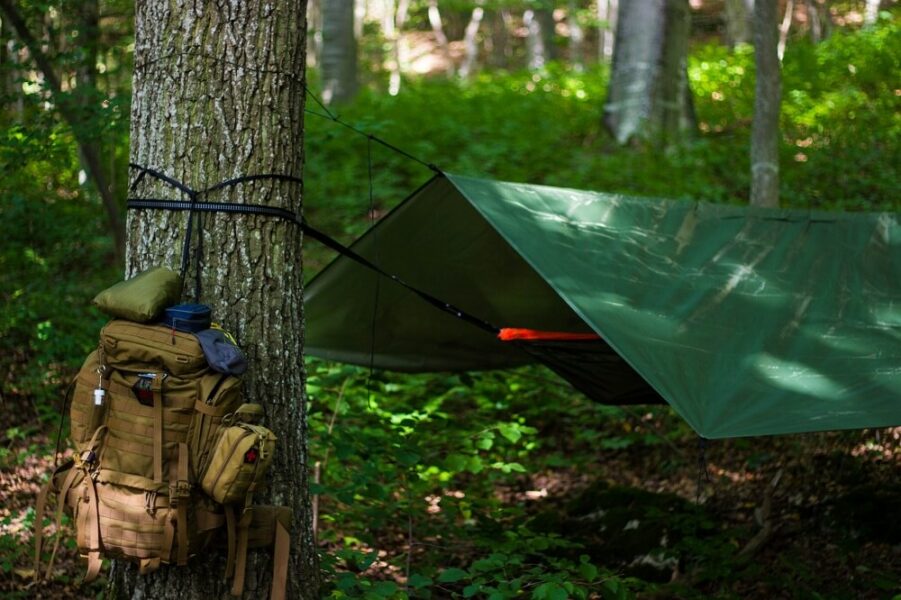
3. Tinder Box
The secret to starting a fire is not the sparks or the flame, and it’s the tinder. Fine, dry tinder makes fire-starting a breeze no matter which tool you used.
So you are in need of a piece of survival gear that allows you to make tinder. A tinderbox has a shredder you can use with some dry sticks to create tinder. Just rub some downed sticks down the grate, and you have ready to use tinder.
4. Survival Stove
Do you need a survival stove? No. Stoves are nice, they can make survival situations easier, but уou can also cook over a normal fire. Even so, there are some impressive portable survival stove options available on the market and worth a look.
For example, there are bio stoves that allow you to generate some electricity, which is a bonus. You mаy also want to get a tent stove for portable heat in the winter. Though you should never get dependent on a stove because it is usually too heavy to lug around and you should include it only when you most need it.
5. Saw
A survival saw is a nifty piece of emergency survival gear to have. These saws are lightweight and can help а lot in a pinch. It’s a compact, useful tool, so it’s on the list for those who want a way to cut wood without much hassle.
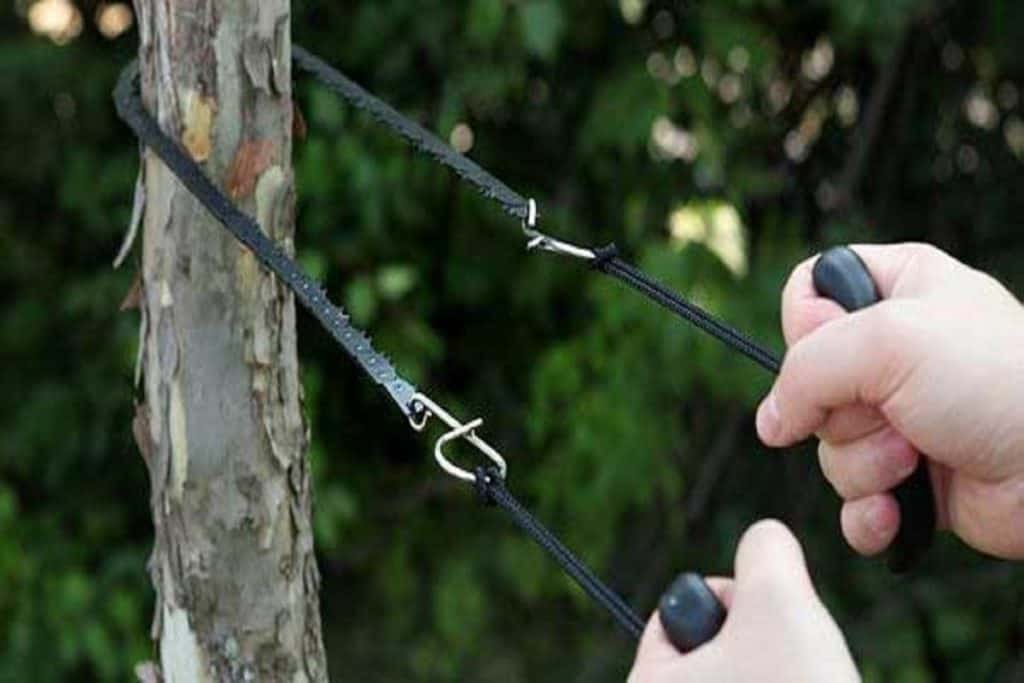
6. Survival Backpack
Whether you call it a Survival pack, bug out bag, inch bag, or backpack, its a survival bag with straps so you can carry your survival gear on your back. They are all in different sizes. Others have extra pockets, and some even have the infamous MOLLE system. So choose the survival pack that works best for you.
7. Paracord
The ways you can use a paracord fir are nearly endless. It allows you to bind, tie, cinch, hang, attach, trip, etc., with the bottom line being the 550 paracords.
The most popular wait to carry it is via a paracord survival bracelet that you an buy or make yourself. But you fashion an uncountable amount of items out of paracord, from donuts to dog collars. When you choose your preferred method, you will always have some cordage with you no matter where you go.
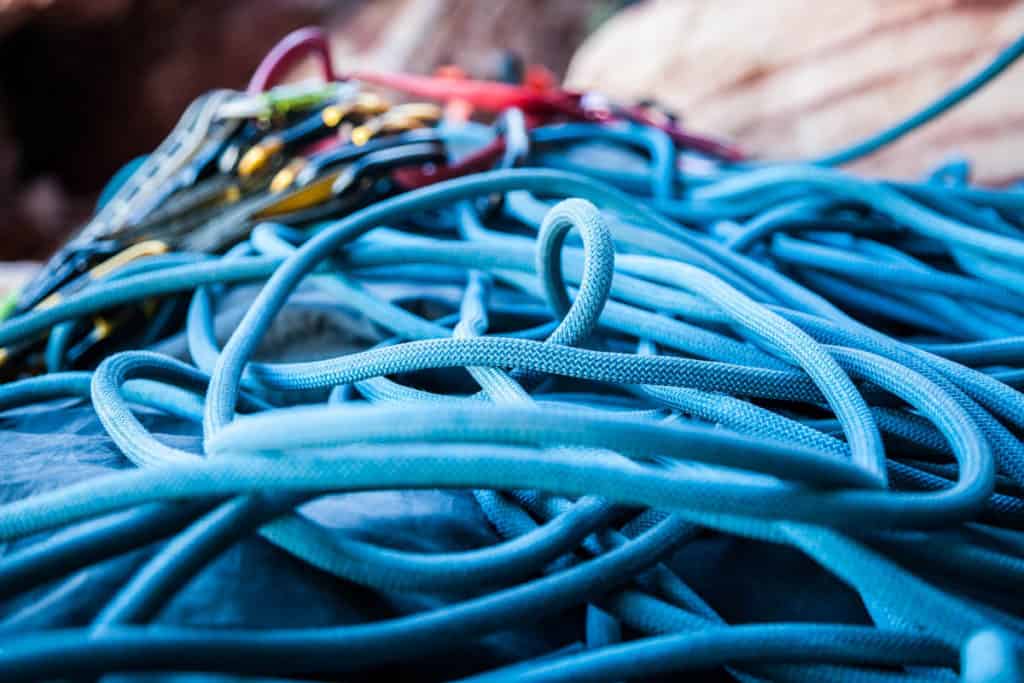
Signaling and Rescue
In the open wilderness, during a disaster or an emergency, your cell phone won’t help you at all, because even if you are in an area with service, it will probably not be walking. So leave the cell phone as a last resort, and rely on some of the ways to contact for search and rescue we will be looking at down below.
1. Survival Radio
As anyone from a military background knows, communication is everything during an emergency. And a cell phone won’t do you any good in the open wild. Without critical information such as weather conditions or roadblock locations, you may find yourself disorientated and going towards your doom without even knowing it. The more intel, the better.
But you shouldn’t forget about putting this intel advantage in the hands of something electrically powered, such as a cell phone. Thus, you should get a hand crank radio so you can have power on demand. If you crank for a few minutes, you’ll be able to tune into any available intel being broadcast over the radio waves.
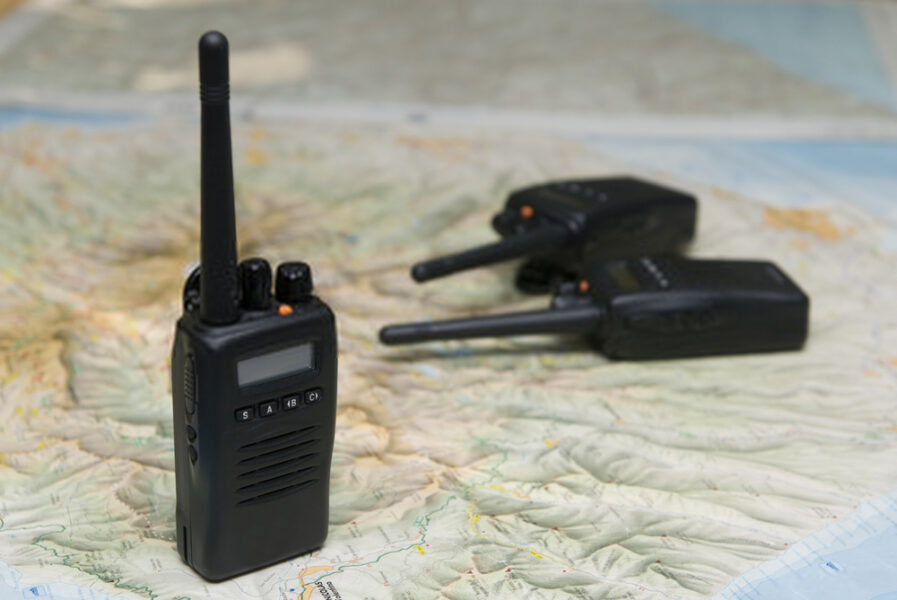
2. Walkie Talkies
If you’re in а group, having a plan to communicate with this group at a distance is crucial. Whether you’re talking perimeter security or making an ambush – they are a significant and very needed advantage. Most of them have a range of over 2 miles, which is more than enough.
3. Survival Whistle
While up to this point, we have covered items that are crucial to surviving until the crisis ends, but what about search and rescue? There are times where the top priority is to get the attention of others who can provide search and rescue or medical assistance by using a whistle. A scream whistle will travel a long distance and get lots of attention for a much larger distance than your voice can carry alone.
At the end of the day, a whistle is a whistle, and you cannot replace it’s the ability to find search and rescue with anything, because unlike all of the other items here, sound can be perceived from anywhere.
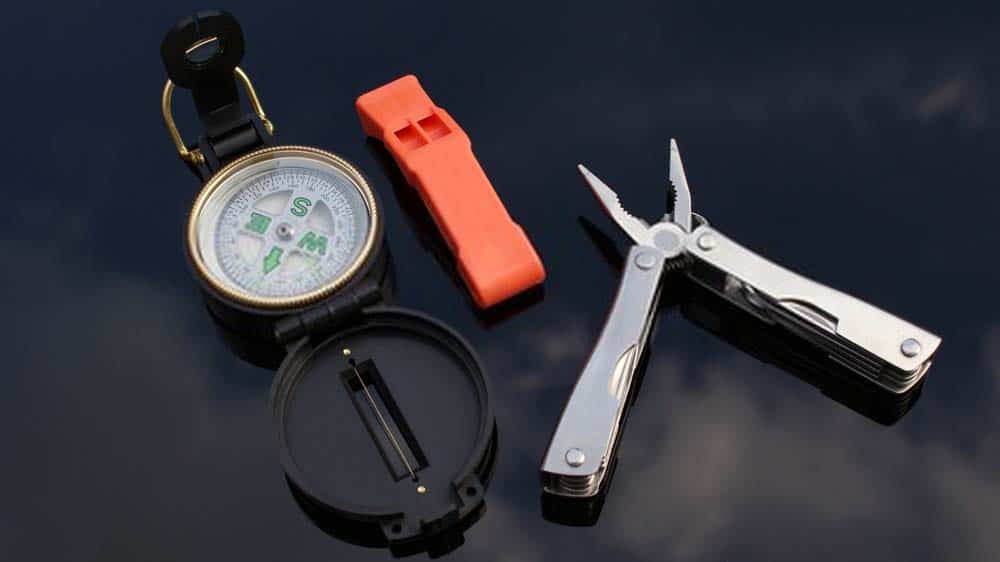
4. Signal Mirror
A signal mirror has two extremely vital survival purposes. First, it can signal help to a rescue plane or helicopter, using the sun to shine a glare towards a rescue team. The other one is pretty simple, starting a fire
While it’s definitely not the easiest way to start a fire, a focused beam of light on dry tinder will burst into flame. Plus, they are lightweight, just a couple of ounces, and take up very little space. An underrated little tool to add to your survival gear list.
5. Flares
Flares are something like an upgrade over the signaling mirror because they also use visual signals, but it uses not only light but smoke too. The only drawback to flares is that they require fire to be used, and they can draw some rather unwanted attention if you are trying to hide during a war, for example. In my opinion, in case of an emergency, having both a mirror and a flare is a necessity, and they sure are better than trying to call someone with your cell phone.
6. Survival Compass
Every true survival enthusiast should own a high-quality military – standard compass. You should forget ones where the needle hangs up or points the wrong direction half of the time. With a compass, you can prevent walking without direction and keep your focus on the exact direction you are heading. And if you have a map with the compass (and know how to use them), you’ll never get lost again.
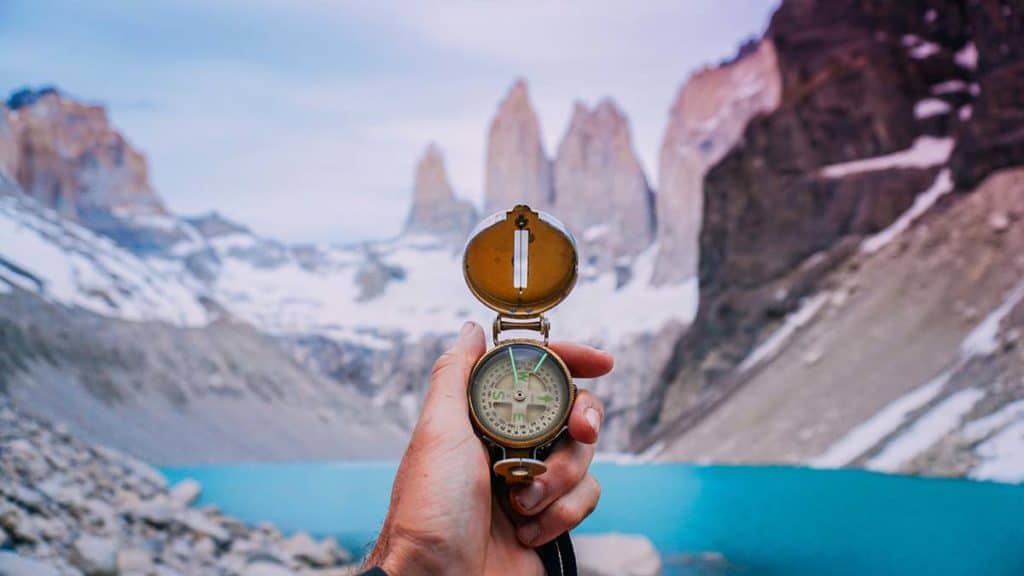
7. Basic First Aid Kit
You need a first aid kit to be able to treat some minor injuries in any situation. Medical survival gear found in most first aid kits such as antibacterial creams, bandages, painkillers, tourniquets, and even a blood-clotting sponge. Obviously, if you’re on the move, you should focus on something as small and portable as possible
However, if you’re preparing for at-home emergencies, you can load up on a more sophisticated medical survival gear in your first aid kit. You can look at the red cross’ official site on a checklist of what a first aid kit should include.
Light
Having a source of light with you all the time is an invaluable resource, and you should make sure that you always have some sort of lantern or a crank flashlight that will illuminate your path and help you work and thus survive even in the dead of night.
1. Survival Flashlight
Noone is 100% ready for an emergency without a means of illumination. A source of lighting is necessary – from moving at night to seeing what you’re doing in a dark basement. Having a lightweight survival flashlight in your pocket is one piece of survival gear that’s NOT optional. It’s essential.

2. Survival Lantern
Like we’ve mentioned above, illumination should never be underestimated, and a flashlight isn’t always enough, so you may need to get yourself a survival lantern. There are a couple of options to choose from, so choosing the best lantern for you won’t be that hard. You might also want to acquire a solar lantern and avoid dealing with batteries.
3. Survival Headlamp
I promise this is the last illumination survival gear on the list, but this one is pretty important. Headlamps provide illumination in a way that the other two cannot. They allow you portable, hands-free illumination that is precisely focused on where you want. Тhere isn’t a way this wouldn’t be a huge advantage in a survival situation.
Optional Survival Gear
Now that we’ve looked at the most important and absolutely necessary items that you should have in your survival kit let’s look at some gear that will be good to have on with you during an emergency, but that isn’t so important that it will save your life.
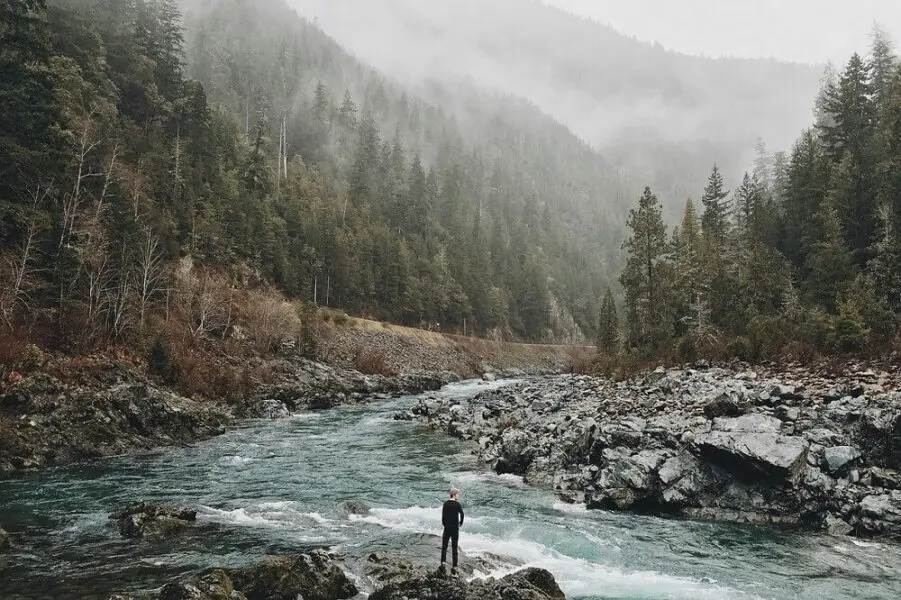
1. Homemade Weapons
Instead of putting all the homemade weapons, you can build on your own here, and I listed it as a whole category. There are many posts out there that list several ways you can make your own shivs or flamethrowers and even stun guns, so research as much as you can.
2. Survival MultiTool
I’m a huge fan of survival multi-tools with a great set of pliers (ones with needle-nose pliers preferred)because they are another one of those survival tools that cannot be replaced, not in the wild at least.
Being able to grip an object, and then pull or twist it can be an essential part of survival, and can’t be achieved with bare hands.
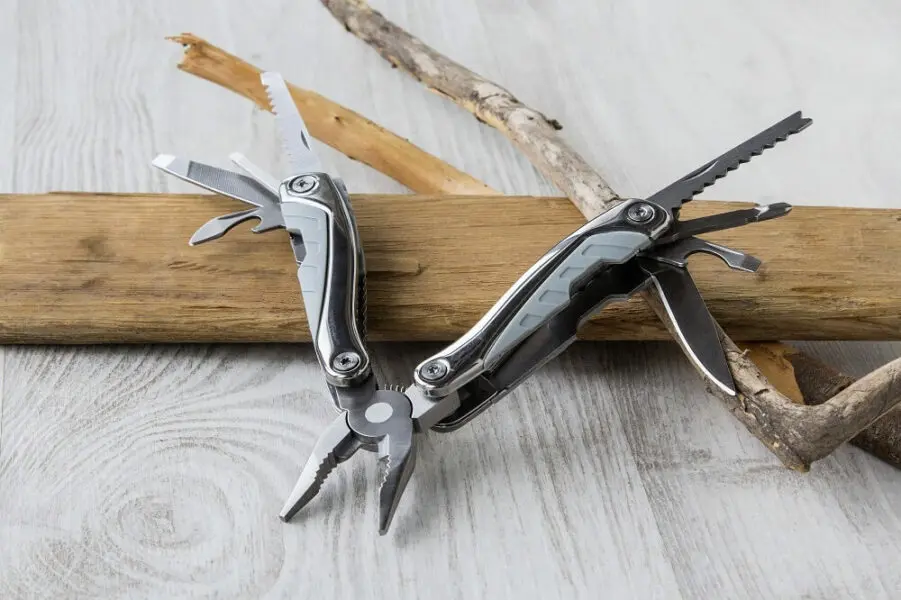
3. Survival Credit Card Tool
This credit card survival tool has 14 different tools, which is a lot for its price, with the only major downside is that it doesn’t include pliers. But if you are the type of person who prefers thinner and more compact tools, with a survival multi-tool – you can’t do much better.
4. Blade Sharpener
A blade sharpener is a must, no matter the situation. А dull blade is as close to worthless as no blade. Even a spoon will be more useful if it is not sharp. So even with a simple blade sharpener, you should be good to go.
5. Survival Watch
Nowadays, there are a dozen impressive survival watches available. Ones that provide more than do more than just tell the time, they can also provide intel such as temperature, altitude, heading, etc. Plus, I myself like the most the watches that can withstand even the toughest of conditions, like the Rangeman Master of G – Shock Series.
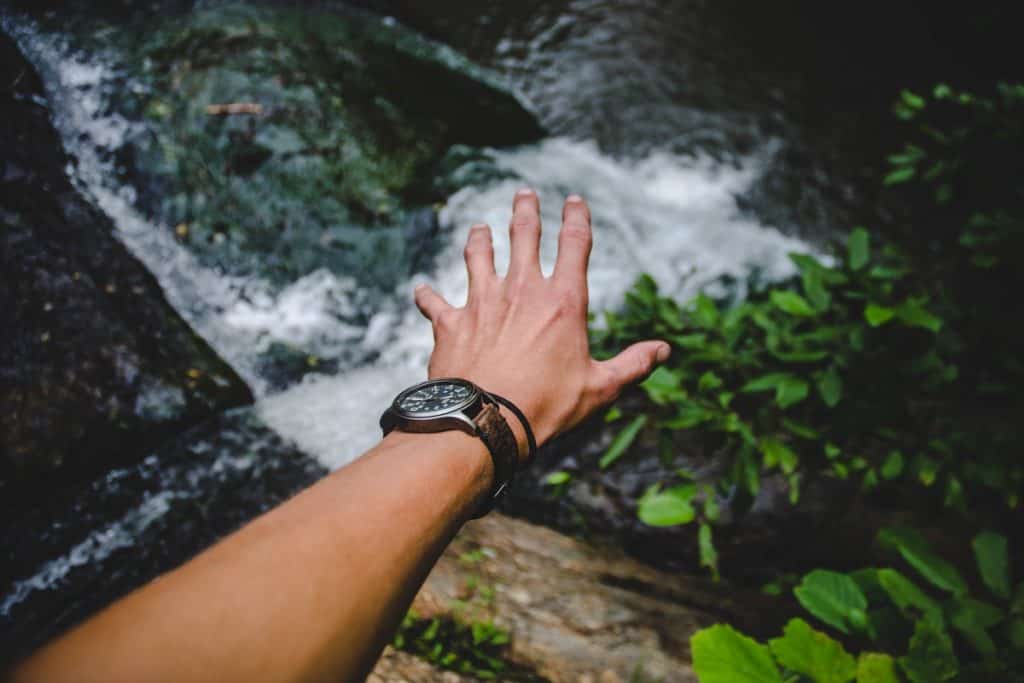
6. Survival Bike
One of the most commonly ignored survival items. If there’s an EMP strike or an emergency where you can’t find fuel, you’ll need another form of transportation. A rugged cross country or mountain bike should do the job, but if you’re relying on staying in one place and building a proper shelter, another 10kg won’t help you much.
7. Survival Bandana
A survival bandana not only takes up as less space as possible in your bag, but it is also as lightweight as survival items get. However, this often overlooked piece of survival gear has many survival uses.
There’s no good excuse not to have a survival bandana in your survival gear. Survival bandanas are a high utility and little weight survival tool.
8. Gas Mask
There are a few emergency scenarios where only a gas mask will save your life, making it invaluable. Nothing else can help you breathe, and breathing is even more important than water
And there are many cases where you will be breathing deadly air, and you won’t even realize it, making you a future member of the walking dead. We shouldn’t forget the nuclear fallout too, where you will need to have a mask for each member of the family to be sure you can survive more than a couple of minutes.
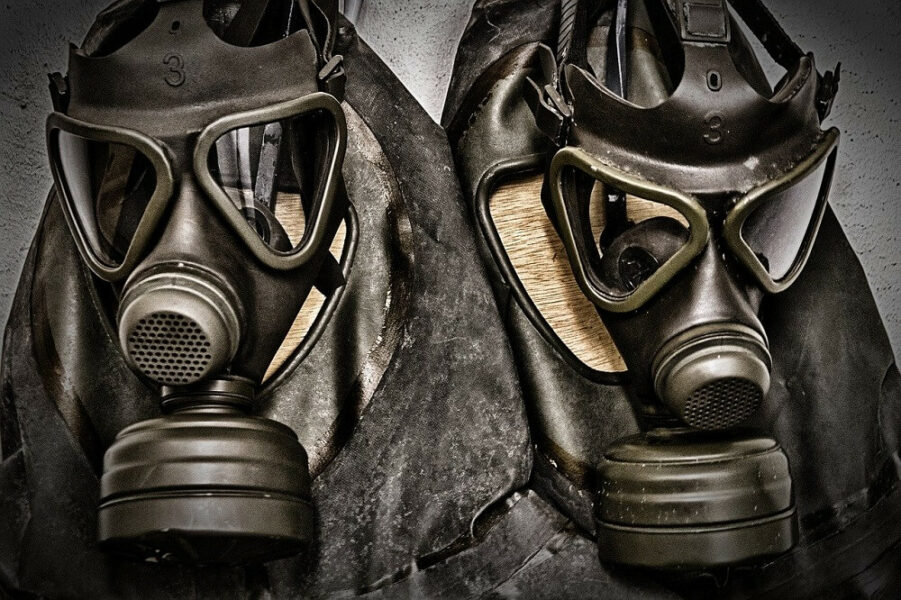
9. Perimeter Defense Alarms
Let’s say you’re thrust into a situation of emergency where rescue is unwanted. Let’s say you have to avoid threats from being detected and roamed. If you want to get some shut-eye, without a perimeter alarm system, this would be almost impossible. Something is needed in place to warn you about trouble in the area. Those cool grenade sound devices can do that for you.
10. Compact Binoculars
Survival items that can help you see objects, animals, or very long-range threats. I call that a superpower. Get a compact pair of high-powered binoculars, and you’ll have a big advantage in survival. You’re at a huge survival disadvantage if you don’t have them.
11. Portable Solar Charger
In a survival situation, do you need electric power? No, you just don’t. It does depend on the rest of the survival gear on your list, however. For example, if you’re planning to use your GPS device or smartphone as a survival tool, then you need a way outdoors to charge it. One of the best portable solar panels you can buy is the PowerBank Solar Charger.
Because without something like that, if the grid goes out for an extended period of time, all of your expensive electronic devices become expensive paperweights. Or a portable solar generator can make you much bigger
12. Survival Belt
If you are like me, the one piece of gear I wear each time I walk out of my house is a belt. So I have a belt with me all the time. So why would I wear a limited-use, regular belt? You should instead upgrade this daily wear item to one which has a ton of survival utility.
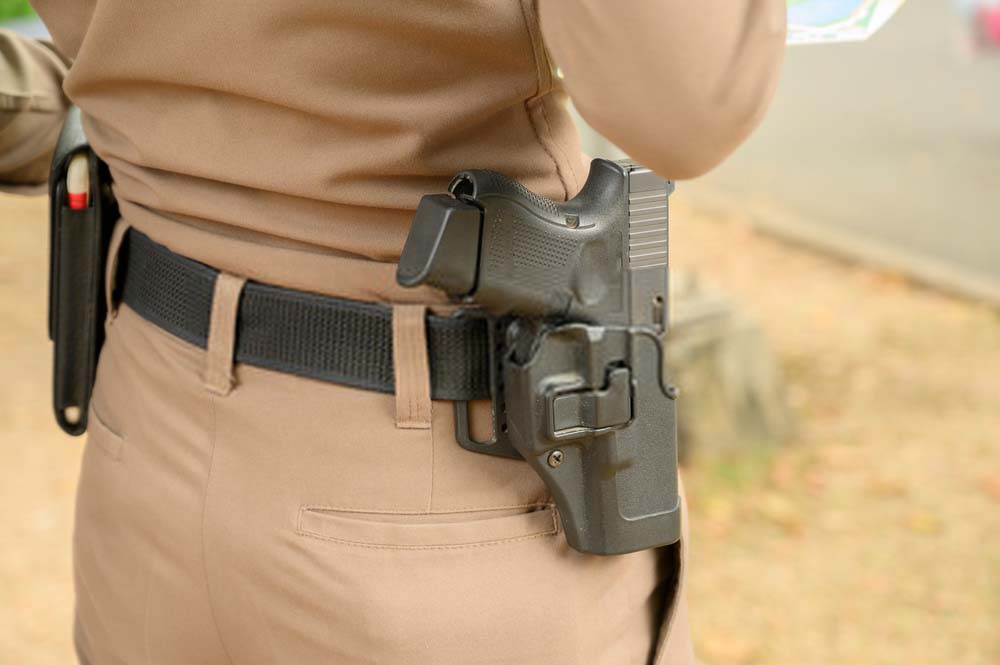
13. Survival Cup
A bit of a luxury item in a survival scenario, but it’s not convenient to drink water from your hands. Plus, you’ll need a bowl or cup to eat those meals if you happen to have coffee, soup, or freeze-.
What’s nice is that you can get one that’s collapsible, and they’re compact and light enough to weigh nothing and take up minimal space. I keep one of them in my backpack for my dog. He may drink from a collapsible cup but not from a water bottle straight away
14. Battery Boost Charger
Dead batteries have thrown many people into survival situations. If you’re out in a remote area and your vehicle battery goes dead, your only option is to start hiking.
OR if you had a battery booster, you could bring the battery back to life and drive on home with no inconvenience. It’s a piece of survival gear you don’t realize you need it until you really need it! This one is highly powerful, but only about the size of a smartphone.
15. Bolt Cutters
Who knows what the world may look like in a major disaster. Survival is all about preparing, adapting, and overcoming. A set of mini bolt cutters gives you the ability to overcome chains and padlocks.
Is it breaking and entering? Yes. But the world is in lawless chaos, and there will be no police to arrest you. Not a tool to be used lightly, but if you ever have the need, nothing can replicate it.
16. Sling Shot
Ammo is heavy. Rocks and pebbles can be heavy too, but you don’t have to carry them. You can find them in nature. So while I don’t support slingshots as real self-defense weapons, I do think slingshots have a place in a survival gear list. They can get you a meal without wasting firearm ammo (with some practice), and to me, that’s worthy of a place on this list.
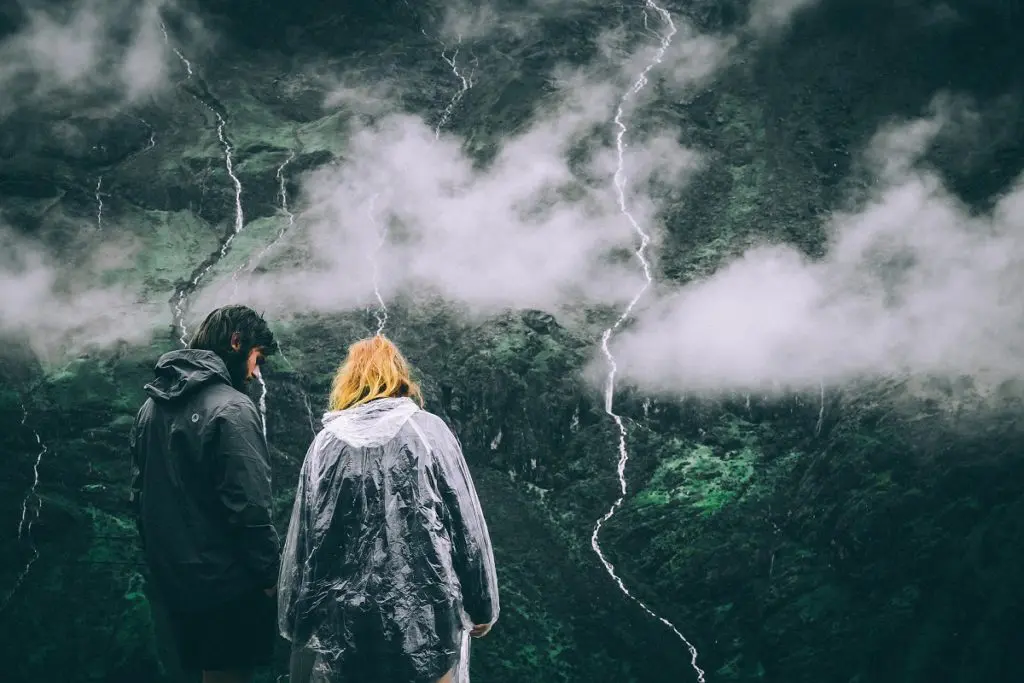
17. Survival Poncho
What if it’s raining outside, but you need to keep moving. Hypothermia is extremely dangerous. And your hypothermia risk goes up exponentially when you’re in wet clothes. You should add a survival poncho with a hood to wear in outdoor-related emergencies. It’s your best portable shelter option in certain conditions.
Final Words
Here we are, at the end of the list. We have looked at all of the most important pieces of survival gear, and I’ve made sure to check the thoroughly to help you be informed of what exactly you are buying and how it will help you survive in the wild. At the end of the day, this article is only a guideline, so get a big and light backpack and fill it with only the gear that you like and you will use it. Choose wisely because this bag can save your life someday.

